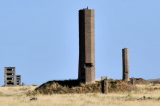By Rachel Day. Research Officer, Parliamentarians for Nuclear Non-proliferation and Disarmament
"The atomic bomb brought an empty victory to the Allied armies. It has resulted for the time being in the soul of Japan being destroyed. What has happened to the soul of the destroying nation is yet too early to see."
-Mohandas Gandhi
Beginning in 1959, the Semipalatinsk region in the Soviet republic of Kazakhstan was used as the site of hundreds of test detonations of nuclear weapons. The impact on human health on the steppe of northeast Kazakhstan has been devastating, with over 1.5 million people suffering cancers, birth deformities, and other serious illness or death from the resulting radiation.
These effects are far from an event of the past, as I was able to witness in a recent trip to the region. Despite the fact that testing ceased 25 years ago, the catastrophic impact on human health continues for generation after generation.
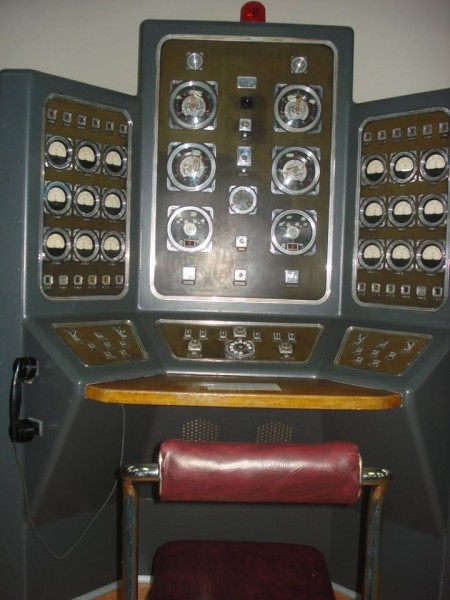
Equipment used to detonate the nuclear bombs at the Kurchatov test site
In 1991, a civil society movement in the Soviet Republic of Kazakhstan supported by the Republic’s President Nazarbayev, successfully moved the Soviet government to close down the nuclear test site. Since then Nazarbayev has led his nation as leaders in nuclear disarmament and has been an active member in the international community working for global disarmament.
Last week, to commemorate the 25th anniversary of the test site closure, and to support the movement for a nuclear weapon-free world, an international conference: Building a Nuclear Free World was held in Astana, the capital of Kazakhstan. I was honored to be amongst over 150 people, from all over the world and all walks of life, invited to Astana by Foreign Minister Erlan Idrissov and Senate President Kassym-Zhomart Tokayev to discuss and plan concrete actions to abolish nuclear weapons.
On August 31st we were given the opportunity to travel to Semipalatinsk to witness first-hand the effects of these deadly weapons. We visited museums which chronicled the devastating health problems faced by the population – and which will continue to impact on them for generations to come. We were also given the opportunity to travel to Ground Zero – the center of the nuclear test sites – where radioactivity is still dangerously high.
As we drove into the test site the buses stopped 300 meters from 'Ground Zero' - the epicentre of many of the nuclear tests. Those of us who chose to proceed further were given facemasks to prevent us from inhaling the toxic dust, and foot-coverings to protect from the radiation in the soil.
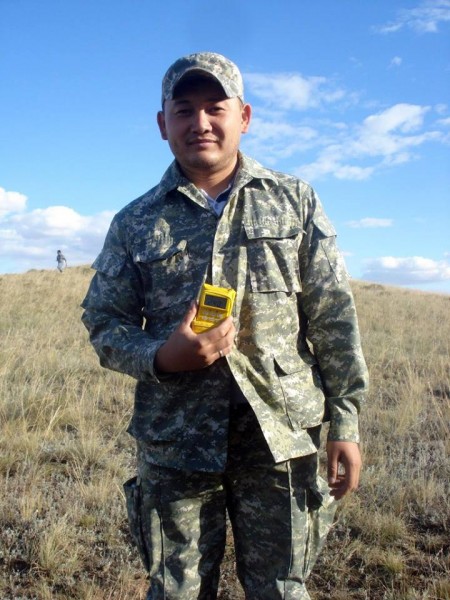
Military personnel with geiger counters accompanied us to the epicentre
Our delegation of parliamentarians, religious leaders, scientists, academics, youth representatives, civil society representatives, military leaders, and veterans, gathered at Ground Zero to bear witness to this iconic site representing the human capacity to destroy civilizations; but also our shared goals and capacity for peace and disarmament.
Ela Gandhi, granddaughter of Mohandas Gandhi, ex-parliamentarian, and high profile activist, led a prayer circle, where she read the Prayer for a Nuclear Free World. This prayer, written to strengthen interfaith movements against nuclear weapons, brought us together to help share a sobering moment on the threat of nuclear destruction. We felt our common compassion for humanity and our shared belief and faith that a nuclear-weapon-free world is possible in our lifetime.
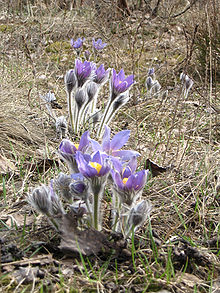
Flower at the Kurchatov nuclear test site. This reminds us that even in most tragic of situations, hope can spring forth.
Mohandas Gandhi felt despair at the dropping of the bomb on Hiroshima, saying that ‘The atomic bomb has deadened the finest feelings which have sustained mankind for ages.’
However, as we walked away from the test site, we felt a renewal of hope for humankind and a strengthened resolve to work together for a nuclear free world. Together we had created a small circle that had great significance and power. In order to achieve our common goal, we are expanding this circle globally until world leaders can no longer turn a blind eye to the crimes against humanity being committed by the possession and readiness to use these weapons.
For we know, that if our collective voice is not heard by the nuclear-armed states, they will inevitably resort to a nuclear war. Then it is quite possible that there will be nothing left of our world to struggle for.
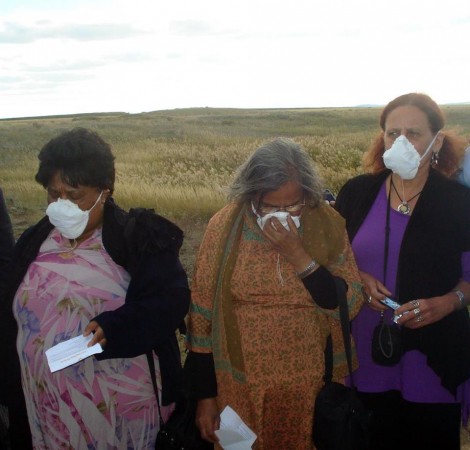
Ela Gandhi leads a prayer circle near the epicentre. Also in the photo are Mary-Anne Plaatjes van Huffel (President of World Council of Churches, Africa) and Jackie Cabasso (Western States Legal Foundation)
